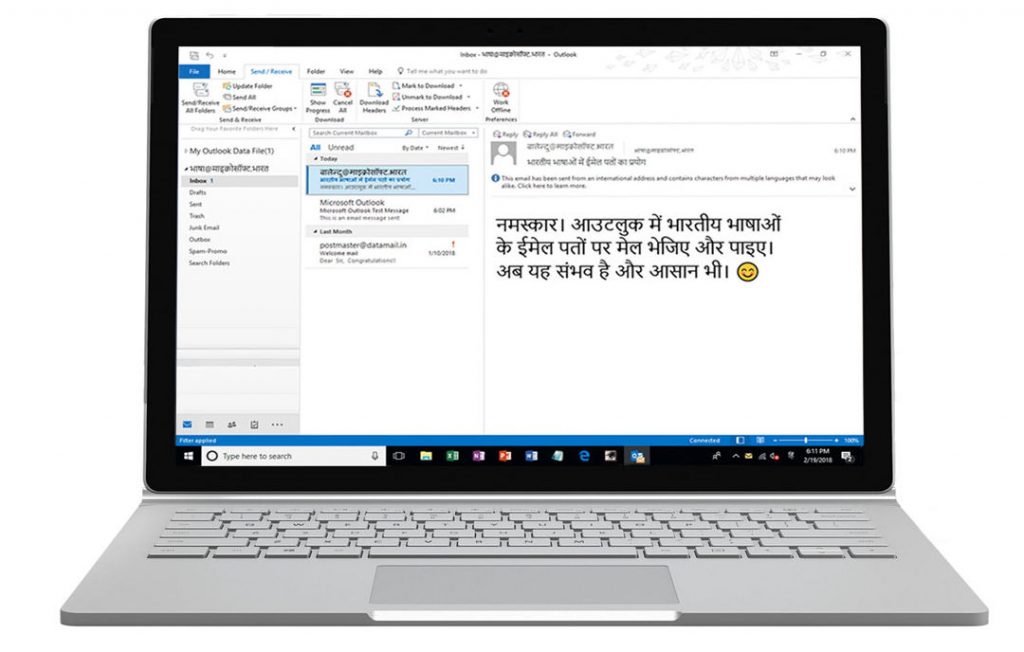
Microsoft today on the occasion of International Mother Language Day announced support for email addresses in 15 Indian languages across its email apps and services, including Office 365, Outlook 2016, Outlook.com, Exchange Online and Exchange Online Protection.
Starting now, users will be able to use local language email addresses for Outlook accounts on PCs, and can now seamlessly send/receive emails to and from local language email addresses via Outlook client on PCs, outlook.com in addition to Outlook apps for Android and iOS. The supported languages include Hindi, Bodo, Dogri, Konkani, Maithili, Marathi, Nepali, Sindhi, Bengali, Gujarati, Manipuri, Punjabi, Tamil, Telugu, Urdu.
Setting up process is also simple, you just need to open up the Outlook and go to File menu and select Add Account. From there you enter your Indian language email address and click ‘Advanced Options.’ Select ‘Let me set up my account manually’ and click on the ‘Connect’ button. From the list of given options, you need to choose what kind of account you want to connect your Outlook app. At this point, you will now have to enter details about your mail service provider, and you’re good to go.
The languages that are being introduced support Unicode and users can register local language email addresses in India from third-party EAI address providers such as XgenPlus through a simple online process. Microsoft said that it is working to support email addresses in any Unicode script through its apps and services including RTL languages such as Urdu and Arabic.
Commenting on the announcement Meetul Patel, COO, Microsoft India said:
Ensuring that language is not a barrier to the adoption of technology is key for digital inclusion and growth. Making email addresses available in 15 languages is an exciting step to making modern communications and collaboration tools more accessible and easier to use for all – something we have been relentlessly working towards. We’re making technology use the language of people, and not requiring people to first learn the traditional language of technology.
